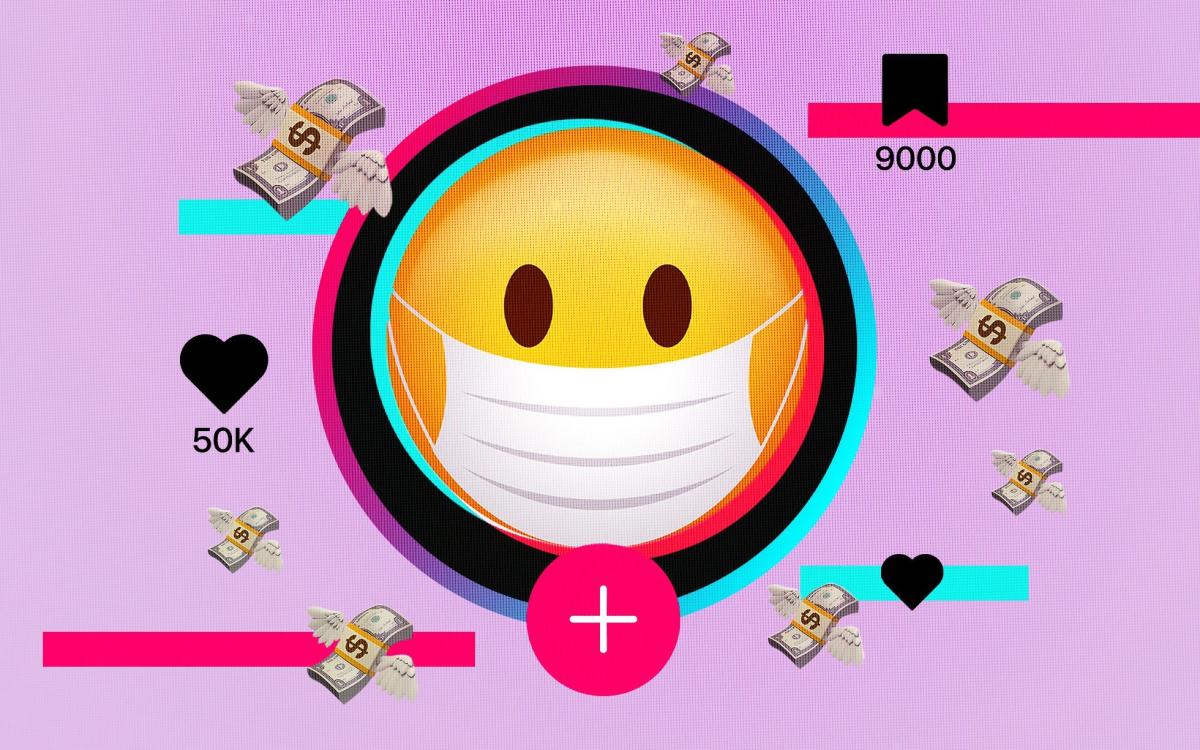Two years ago, Lexi Boreham was reading an email at her desk, when she suddenly felt something was wrong.
“I was just hit by a wave of fatigue and brain fog, which I found really unnerving,” she explains. “I was like, ‘Why is there a block?’”
Boreham, 31, had been working as a litigation lawyer for Taylor Wessing for six years having graduated from Cambridge University with a first in 2014. Fit and healthy, up until this point, she says she was doing a lot of exercise, socialising and enjoying “just a very busy lifestyle” in London with her friends.
In November 2022, two months after first experiencing fatigue, Boreham was signed off work. She has been on sick leave since then.
“I was sleeping sometimes until 4pm, not able to get out of bed to get water, to take medicine, to eat, and it was a really dark time. I was really unwell. And since then, it’s just been a slow crawl back to trying to find help again.” In May 2023, she was diagnosed with long Covid.
After a year of her illness, when she had “left the worst behind her”, Boreham created an Instagram account to provide “hope” for those struggling and “find a community”.
Now with 21,000 followers, she has joined a growing number of people who have acquired large online audiences by posting about their illnesses on Instagram – a type of “influencer” specifically focused on sickness. It’s an online support network filled with people who post regular updates about their struggles with chronic conditions.
To members of this world, it is a forum for those with long-term illnesses to share experiences and encourage each other with posts to see the positive side of their conditions.
But, to those worried about the growing number of people who are out of work, many citing chronic illnesses, the phenomenon risks fuelling the national problem rather than helping to address it.
This growing online trend follows a sharp increase in the number of people recorded as suffering from long-term illnesses in recent years. According to a report into the Health and Prosperity of our nation by the Institute for Public Policy Research, the number of adults with any long-term illness has risen even after accounting population growth.

The number of people who have a long term illness has increased from 12 million people in 2010, to 14.3 million people in 2019, and is projected to reach 18 million by 2040.
The report, commissioned by Lord Darzi, said that the number of working-age people with a chronic health condition is up by four percent in a decade. It revealed that today, in a workplace with 25 staff, eight people will have at least one long-term condition on average (compared to six in 2014).
The UK is, according to the report, the “sick man of Europe”, with 900,000 workers who were missing from work due to sickness as of the end of 2023.
Oonagh Cousins, an ex-Team GB rower who left her Tokyo 2020 dream behind after suffering from debilitating fatigue and being diagnosed with Long Covid, says she has observed how people with chronic illnesses are “building communities on Instagram”.
Now a Visiting Research Fellow into Long Covid at Oxford, Cousins adds: “I think the community that you see on social media is a direct result of how lonely and isolating these illnesses are. There is very limited support and healthcare available.
“There’s a strong community on social media because the people who have [these conditions] are often the only ones that really get what people are going through.”
Like their counterparts focused on other topics, such as fashion and food, some sickness influencers are making money from posting about their conditions.
Boreham says that she receives at least one request per month to market a brand on Instagram. She works with companies such as “Visible”, a wearable heart rate monitor which helps you track users’ energy levels.


As well as a free subscription (which is usually around £180), Boreham also gets paid for videos she makes promoting the company, which she has done three times. One video made £200, while another two earned her £100.
“It’s not money you can live off,” she says. “But obviously there are some people who are doing a lot more brand deals because they don’t necessarily have other employment.”
“Jemma Bella” used to work full-time as a science teacher before she signed off work with long Covid and postural orthostatic tachycardia syndrome (POTS), a condition characterised by an abnormally large increase in heart rate upon sitting up or standing.
With 143k followers on Instagram, she uses her platform to post brand advertisements, sell bracelets and fundraise for her condition. “I decided to start this Instagram page because I have been utterly inspired by so many individuals on this platform that are documenting their own recovery journey with Long Covid. It has been the greatest support to find out I am not alone,” she said in a post in May 2023.
Jemma posts advertisements for brands on her Instagram profile, sells her own homemade bracelets on Etsy, the online marketplace, and a page asking her followers to buy her a coffee. Like Boreham, Jemma has also partnered with “Visible”. In one video posted on her Instagram, she talks about the ways in which she has benefited from using the product.
Boreham says: “I think everyone’s entitled to financially support themselves in a way that works for them, and if it’s a product that they’ve used and found valuable, then fair enough if that’s how they want to earn a small income.
“It’s difficult to support yourself if you’ve got a chronic illness and you can’t work anymore; the disability allowances that you can get from the government aren’t substantial. So if you need to support a family or whatever, then needs must.”
However, Sophia Worringer, deputy policy director at the Centre for Social Justice, says the growing number of “sickfluencers” represents a worrying trend, at a time when the Government cannot sustain the number of people out of work long-term.
Some social media accounts go much further than influencers such as Boreham, Cousins and Jemma, and encourage those with long term illnesses to apply for disability benefits, or even “hack” the system to obtain welfare payments.
“I am concerned to see the growing number of people off work sick, and even more so if there are online accounts encouraging people to lean into conditions and sharing tips on how to ensure the welfare system gives you the result you want,” says Worringer.
Some posts on TikTok purport to explain how to “hack” the disability benefits system – particularly Personal Independence Payments (PIPs). “Biggest PIP hack!!”, one account posted, adding, “the PIP tip everyone applying needs to know”, and explaining how to maximise PIP payouts.
Worringer says: “We cannot afford to have a growing cohort of people existing purely on welfare in the long term. While there will always be people who are sick and cannot work, and these people should be supported, it appears there are a growing number of people who are opting out of the workforce, particularly from a young age. We must not forget that it is taxpayers that are footing the bill.”


Miriam Cates, the former Conservative MP, also expresses concerns about the relationship between social media and growing worklessness. “Social media has had a significant impact on culture, particularly for young people,” she said.
“It is very concerning that some social media influencers are seeking to normalise worklessness and even advise people on how to be successful in claiming more sickness benefits. Of course if people are genuinely too sick to work, they must be supported. But creating a culture that makes it easy to opt out is bad for young people and bad for our economy.”
Some of those making money from posts about their chronic illnesses suggest they are doing so at least in part due to what they see as insufficient financial support from the state for people with their conditions. The Government’s disability allowance rate ranges between £28.72 per week to £108.55, depending on the level of help required by individuals.
Katya Kozary, founder of “Positively Chronic Travels”, an Instagram account with 25.5k followers, says the application process for state disability support is lengthy and intimidating.
Kozary was 23 when she was diagnosed with Hypermobile Ehlers-Danlos syndrome (EDs) in 2018, a group of conditions that cause very flexible joints and stretchy and fragile skin. When she was diagnosed she was working at a film production company, but at the end of 2019, she left her job to travel indefinitely, whilst simultaneously creating the platform Positively Chronic Travels to provide resources to help others with life, travel and chronic illness.


Kozary has been self-employed since then, running both the Instagram account and website about her several chronic illnesses, alongside a food photography business, which is her main source of income.
“I haven’t even applied… It’s just relentless, I just know that it’s a very harrowing process, and sometimes you have to apply three times. It depends on how you’re doing on the day, because my condition is variable,” she explains. “It’s one of those things that’s very hard to assess accurately. So [instead] I put all my energy in just trying to build my business.”
Reagan Montanez, 27, also has become a self-professed influencer, running an account called “The Chronic Chronicles” with 50.9k followers on Instagram. Based in Kentucky, Reagan was diagnosed with POTS in 2022 after she contracted Covid in 2021.
“I feel like the version of me from before and now are two totally different people,” she explains. She works for a solar panel company, but her working life is geared around her condition, which she posts about regularly on Instagram.
“Within the past few months, I was monetized on Instagram,” she explains. “Monetizing” means that Instagram pays for the content posted by an individual user based on the number of times each post is viewed. Her most popular video has 13 million views. “They pay maybe a few cents for every several 100 views on a reel or post. There’s a calculator in the main area of the app, and so you can see that this reel earned $5 or that real earned $2. It just adds up over time.”
The most she’s made on a single post, she says, is $100. Her top earning month of all time earnt her $600 from Instagram alone. From influencing over the past three years, Reagan estimates she has made around $2000.
Alongside Instagram, Reagan also earns a commission from advertising products such as “wellness” drops that can be added to drinks and on which her followers get a 20 per cent discount.


Boreham, talking of the wider trend of supplements being marketed to those with chronic illnesses, says that “people who are chronically ill… [are] desperate and will throw money at something [to] help them get better.” She warns: “The reality is that there’s not one magic supplement or cure that’s going to help people with chronic illness.”
Charlotte Bramford, now 40, is another social media user making money from posts about suffering from long-term sickness. Following a kidney infection when she was 23, Charlotte was diagnosed with chronic fatigue syndrome, moving to live with her father in France when the illness became particularly bad. She has been housebound for the past nine years, and bed bound for five years.
She hasn’t had a full-time job for 10 years, but she has a YouTube channel, which she says brings in revenue for her, though she has been mainly living on disability benefits.
“A few months ago, a tech company approached me and they were building an app for chronically ill people. They wanted feedback from a chronically ill person, so I did a bit of consultancy work there,” she explains, before adding “you’re sort of scraping by, but really you’re surviving on disability benefits”.


The revenue she earns from YouTube and her blog she describes as ‘pocket money’. “If I don’t have the energy to post, then I won’t get as many views. So then I won’t get much money.”
But if Britain truly is the “sick man of Europe”, at least some are making the most of it online.
Broaden your horizons with award-winning British journalism. Try The Telegraph free for 3 months with unlimited access to our award-winning website, exclusive app, money-saving offers and more.















